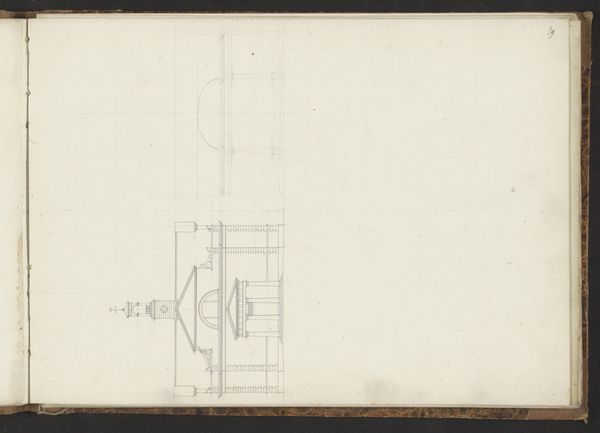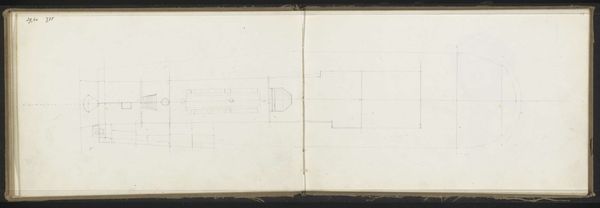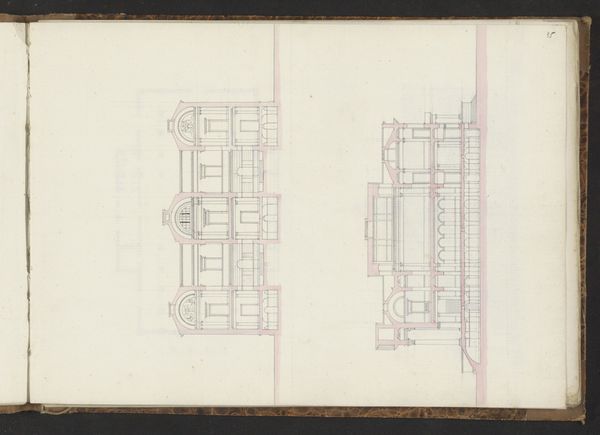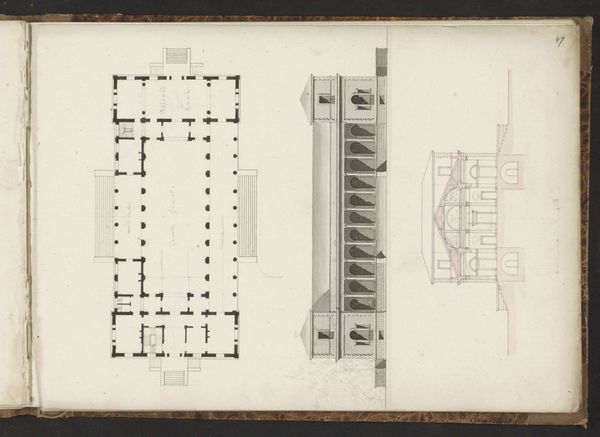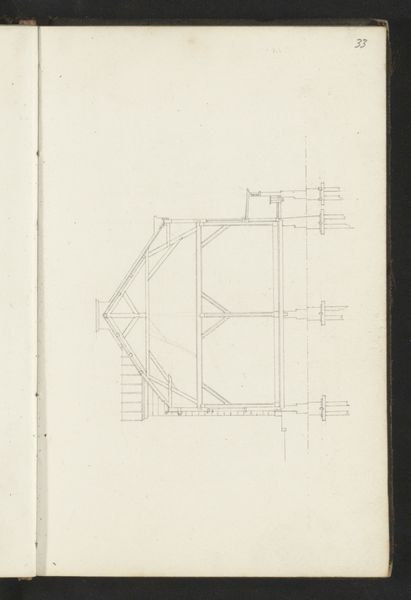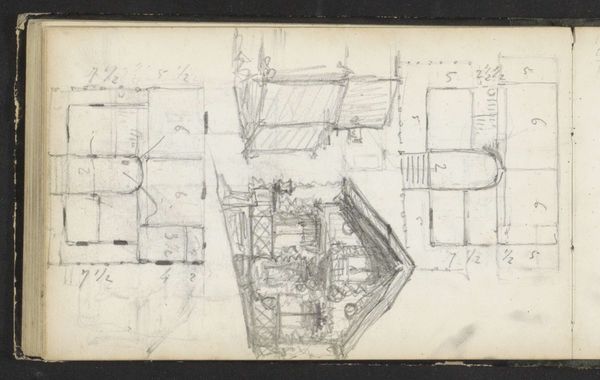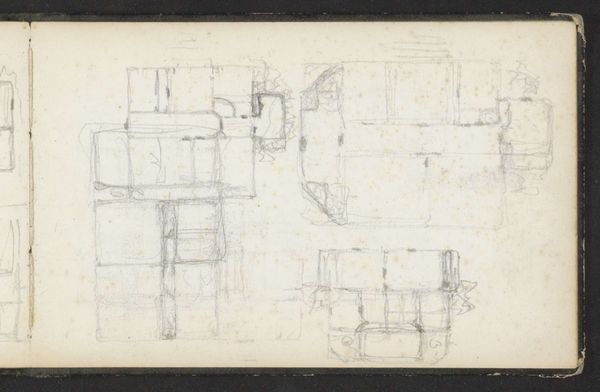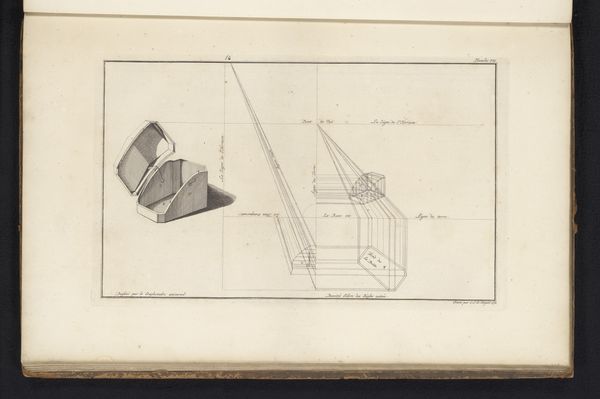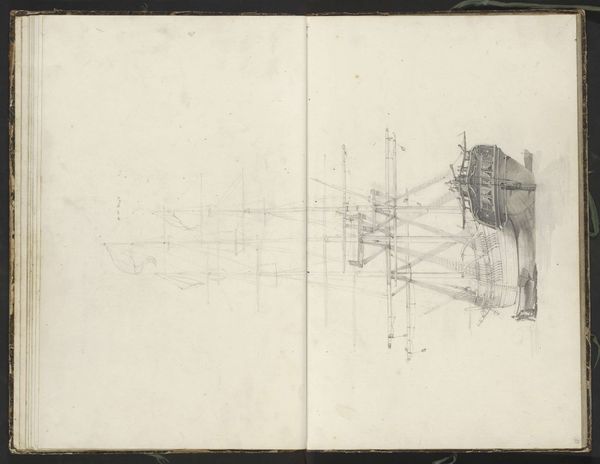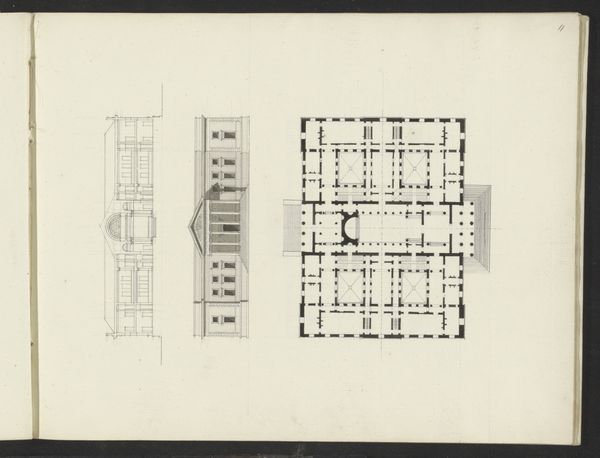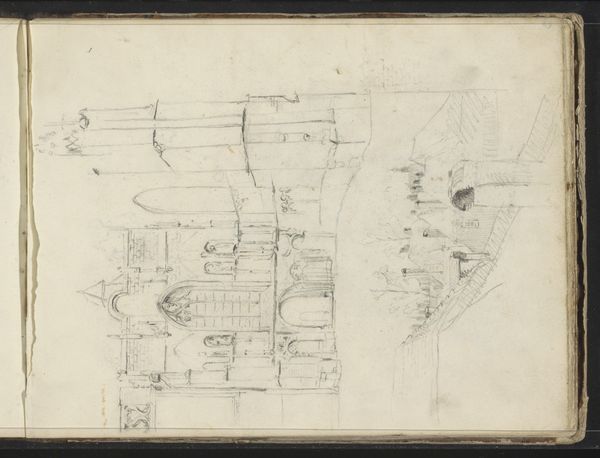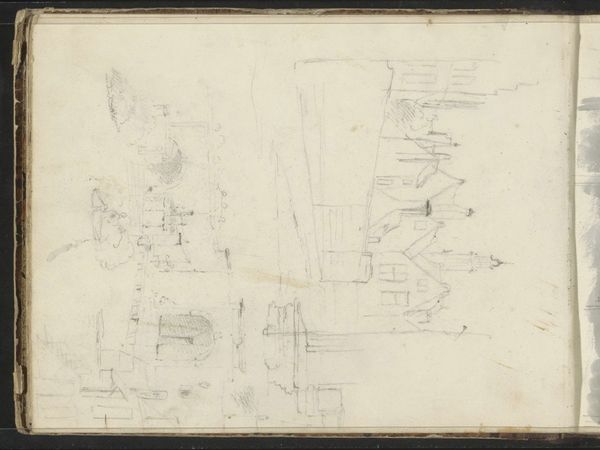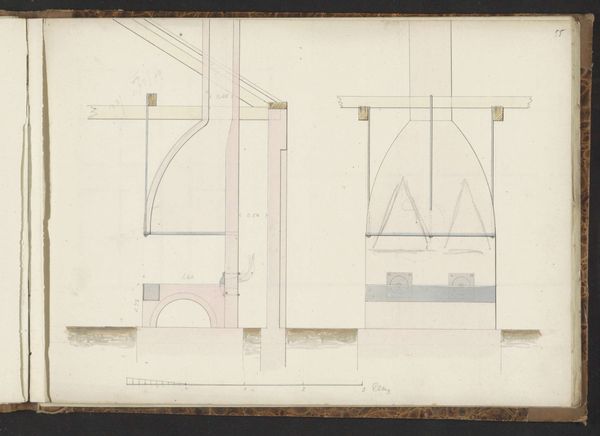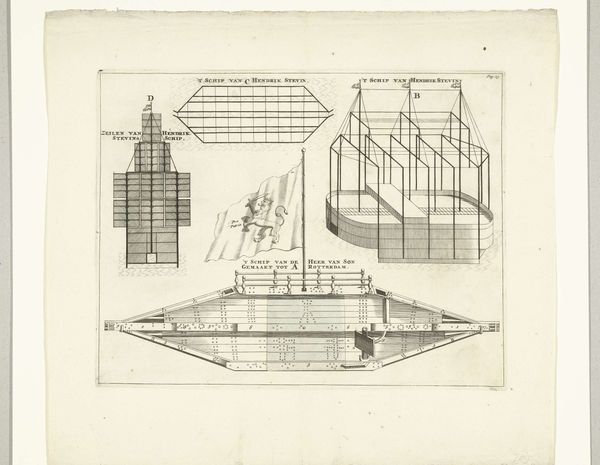
drawing, paper, ink, architecture
#
drawing
#
paper
#
ink
#
geometric
#
architecture
#
realism
#
building
Copyright: Rijks Museum: Open Domain
Editor: This is "Voorgevel en doorsnede van een gebouw met twee waterspuwers," which translates to "Facade and section of a building with two gargoyles," by Willem Springer Jr., likely made between 1825 and 1907. It’s a drawing made with ink on paper depicting the architectural structure of a building. I’m really drawn to the clean lines and the way the artist has depicted both the exterior and a cut-away view. What do you see in this piece? Curator: The intrinsic value of this piece lies in its representation of architectural form. Note the stark contrast between the shaded facade and the skeletal cross-section, revealing the building’s inner structure. Springer uses line weight strategically, defining the building’s outline with heavier strokes while employing delicate hatching to suggest volume and texture. The geometric precision is undeniable, particularly in the arches and the roof’s apex. Editor: Yes, I was fascinated by that contrast – it’s like two artworks on one page! The cross-section almost looks like an X-ray. Curator: Precisely. The drawing achieves a spatial dynamism through this duality. The use of negative space is also notable; the unadorned areas focus the eye on the building’s geometry and structural integrity. Does the regularity of form suggest anything to you in relation to the artist’s intention? Editor: I suppose that, given its objective and realistic qualities, he wanted to capture architecture as it truly is without embellishment, focusing on the pure design. Curator: I concur. Springer presents us with the essential framework, inviting us to contemplate the beauty inherent in structure and proportion. It’s an elegant example of realist representation that favours detailed execution over artistic license. Editor: I hadn't thought about the realism so directly before. Now I see that focusing on these intrinsic design elements adds so much to appreciating the work. Curator: Indeed, analyzing the composition in such detail can yield profound insights into the artistic intent and the subject matter itself.
Comments
No comments
Be the first to comment and join the conversation on the ultimate creative platform.
